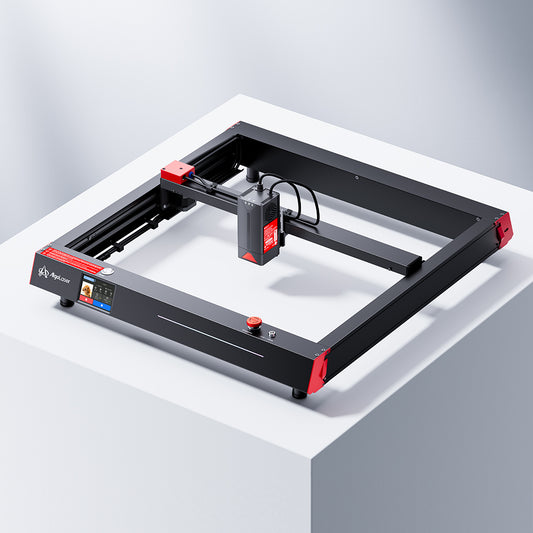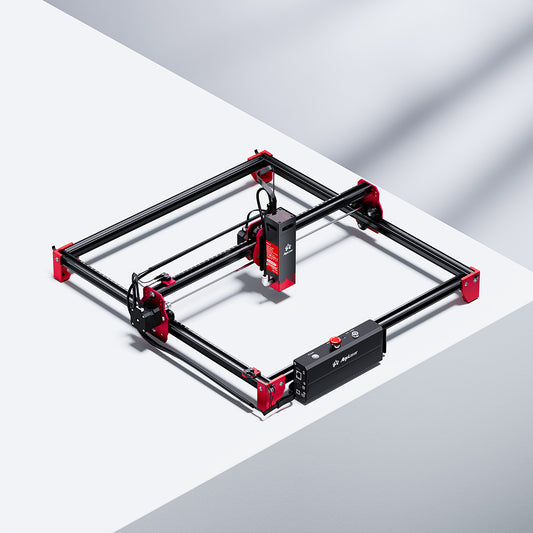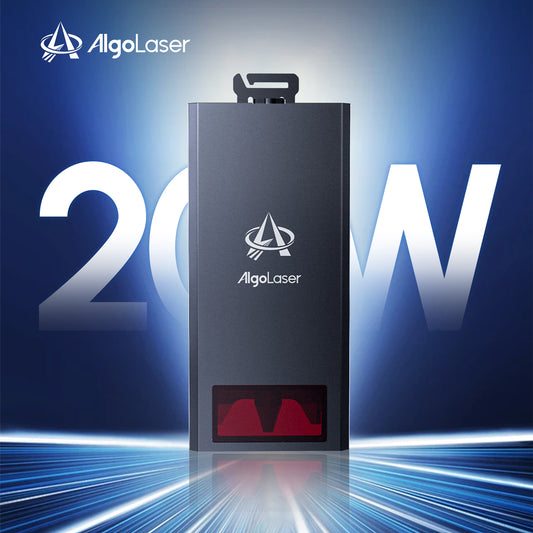Application of Laser Processing Technology to Metal Processing
Focused on the current goal of high-quality development, the demand for the transformation and upgrading of the manufacturing industry is extremely urgent. The manufacturing industry has entered a period of high-end, intelligent, and domestication, and optics manufacturing has also entered its "golden age."

Qian Lao (Qian Xuesen) named LASER as "laser" in 1964. Laser is a beam of photons exciting atoms, emitting a coherent beam of photons, and amplifying them to a certain energy level output. This is one of the "Four Great Inventions" of the 20th century, following nuclear energy, semiconductors, and computers. Laser has four major characteristics: high energy (brightness), high directionality, high monochromaticity, and high coherence. After laser localization, it has become an advanced tool and has been widely used in various fields, including industry, medicine, commerce, and information technology. The development history of lasers can be traced back to 1917 when Einstein proposed the theory of stimulated emission. In 1960, American scientists discovered the first laser in the laboratory. In 1961, China's first ruby laser was born at the Changchun Institute of Optics. In 1971, Huazhong University of Science and Technology established the first laser major among domestic universities. The overall industrialization process of lasers in China began in 1997 when the Huazhong University of Science and Technology Laser Processing Engineering Center was transformed into a company. In 1999, the parent company Huagong Technology was established and listed in 2000, making it China's "first laser stock." Through nearly 20 years of efforts and breakthroughs in core light sources, and through applications in various fields, especially in 3C, automotive, and semiconductor industries, in 2015, through collaborative development between industry, academia, and research, led by universities, we won the first prize of national scientific and technological progress.
Currently, the industrial application accounts for 60% of China's industrial laser industry. The core driving force behind the growth of lasers in industrial applications is the continuous penetration and replacement of laser processing technology in traditional processing technology. Laser processing is moving towards high energy development. Fiber lasers can reach up to 60,000 watts and are already commercially viable. Meanwhile, laser processing is developing in two directions: high-efficiency, large-size macro processing, and small-size precision micro-nano processing with high peak power, narrow pulse width, such as picoseconds and femtoseconds.
With the increasing demand for precision in industrial production and processing, how to produce precision machined metal composite parts has become one of the key issues that metal composite material manufacturing companies must solve. Among the numerous production and processing of metal composite materials, laser equipment is widely used due to its high processing efficiency and precision.
Application Principles of Laser Technology in Metal Processing
The basic element of the key application of laser generators in the production of metal composite materials is to adjust the focus of the laser generator to the fiber laser cutting or arc welding welding using the monochromaticity of the laser generator, the characteristics of related fields, and the vertical plane of the laser generator. In general, metal composite materials create a kind of raw materials that must be processed. Workers can use local industries to accurately produce and process metal composite materials.
In addition, the operation of the laser generator can be adjusted through unique mechanical equipment. Therefore, partial melting of metal composite materials can be precisely controlled. The key basic principle of applying lasers in metal material processing is to use the linear scattering characteristics of lasers and the ability to generate high temperatures during the entire metal material processing. In addition, during the entire metal material processing, it can adjust the output power and compressive strength of the laser generator, and the most important factor of deformation is the compressive strength of the focal point of the laser generator and the processing process.
Advantages of Laser Technology in Metal Processing
Currently, lasers are coherent light sources that typically have important characteristics such as coherence, monochromaticity, normal directional wells, high intensity, and high power. In addition, if the current laser is focused on a point before processing the surface treatment material, it has the effect of gradually transforming into heat and light instantly, and vice versa, heating to tens of thousands of degrees Celsius. At this time, even the toughest materials can withstand high temperatures and melting. At the same time, the temperature of the material will rise, evaporate to form small holes, and the part removed and the remaining material in the entire production process will gradually evaporate without leaving any residue. In fact, it is a continuous process of rapid liquefaction and evaporation of local laser processing materials due to the rapid increase in temperature during the material processing process. Laser processing technology can achieve parts processing that traditional sheet metal processing methods cannot complete. When the size of the hole drilled in the steel in the box is large, traditional sheet metal processing methods cannot be used, but laser processing technology can easily complete continuous processing. In the same field, laser processing technology is more accurate, faster, and more competitive than traditional technology. In two-dimensional terms, laser processing is more flexible.
Fast Processing Speed
Compared with traditional production and processing expertise, the most important professional advantage of laser cutting equipment in the production and processing of metal composite materials is that the processing speed is faster. Compared with fiber laser cutting, the professional processing speed advantage is more obvious. According to scientific research on parts processing in metal material processing, the power of the laser generator is directly proportional to the fiber laser cutting speed of the metal composite material. During the entire production and processing process, the application of fiber laser cutting mechanical equipment can quickly produce various metal composite materials and non-metal materials, and the application of fiber laser cutting mechanical equipment can quickly produce complex parts, basically ensuring the accuracy of production.
High Precision of Laser Technology Processing
In the entire process of applying laser technology to process metal materials, the parts made of metal composite materials have high requirements for the processing precision of laser cutting or welding processes. After the laser generator irradiates the surface of the part, the surface of the part will be partially melted. The parts of the metal material with the specific melting point and melting temperature can be adjusted according to the precise management program. Compared with traditional welding processes, laser welding has stronger selectivity. During the entire metal welding and fiber laser cutting of metal composite optical fibers, the application of laser generators will reduce the harmful substances generated during the entire process of argon arc welding and arc welding. And basically maintained the health and safety of employees. In addition, because the local melting of metal materials can be precisely controlled, the performance of other parts of the metal workpiece will not change due to the increase in temperature. Based on this, the welding accuracy and performance of metal materials can be more stable.
Good Processing Quality
Based on the high precision of laser technology processing, laser technology can improve the processing quality of metal materials and quickly and accurately cut and weld high-melting-point metal materials. On this basis, higher processing accuracy and quality can be achieved for some high-melting-point metal materials. Secondly, by using laser technology to process metal materials, the partial melting operation scale of metal materials can be greatly manipulated horizontally. Therefore, after laser cutting or arc welding welding, there are fewer surface unevenness on the metal material product parts. From this perspective, laser cutting equipment can not only improve the production quality of metal composite materials but also improve the production efficiency of metal composite materials.
Application of Laser Technology in Metal Material Processing
Due to its good laser directionality, high power, good monochromaticity, and other advantages, since the early 1960s, this task has been jointly completed worldwide and has been highly valued in the scientific research of this field. Laser technology has promoted the rapid development of many fields, especially in the processing results of any application field.
Laser processing refers to the process of changing the shape or properties of an object's surface caused by laser. According to the mechanism of interaction between light and matter, laser processing can be roughly divided into two categories: laser heat treatment and photochemical reaction processing. Laser heat treatment refers to various treatments of the body due to the rapid heating action of the laser on the material. Photochemical reaction treatment refers to the process of using high-intensity, high-brightness lasers to control the body and cause photochemical reactions, also known as cold processing. Cutting, drilling, drilling, and sweeping of cold and hot metal and non-metal materials, such as welding heat treatment of metal materials, surface strengthening, and reduction, are very favorable.
Application of Laser Technology in Metal Material Cutting
Laser cutting can effectively utilize the advantages of programming software, greatly improve the utilization rate of plates, reduce the use and waste of materials, reduce labor intensity and labor, achieve the expected results, improve, on the other hand, the unloading function can omit the cutting link and plate cutting, effectively reduce the clamping material, reduce additional processing time. Therefore, it promotes the most reasonable arrangement of cutting programs, effectively improves processing efficiency, and saves materials. In a growing market environment, rapid product development means the market. The application of laser cutting machines can effectively reduce the number of times the mold is used, save the new product development cycle, and improve its development speed and pace.
The quality of parts after laser cutting is very good, significantly improving production efficiency, beneficial to small-batch production, effectively ensuring the shortening of the product development cycle, market atmosphere, and application of laser cutting, accurate positioning of size-cutting molds, and can be widely used in future large-scale production. Sheet metal processing work, almost all types of acne require precision machining surgery, laser cutting machines and direct welding assembly, so the application of laser cutting machines reduces the process and construction period, effectively improves work efficiency, can achieve labor intensity and double improve reduce processing costs, promote the improvement of working environment, greatly accelerate the development progress, reduce mold investment, effectively reduce costs; laser cutting machine in sheet metal processing and drying in the extensive application can greatly reduce the processing production cycle of new products, greatly reduce mold and other investments; significantly improve the processing speed of workers, save unnecessary processing procedures; at the same time, it is widely used in industrial processing, laser cutting machine can effectively process various complex parts, improve accuracy, help shorten processing cycles, improve processing accuracy, directly eliminate the process of stamping die replacement, improve labor productivity.
Laser Welding
Laser welding technology is very popular in modern times. There are mainly two forms of presentation, namely deep fusion welding and conduction welding.
Deep fusion welding is widely used in the machinery manufacturing industry. In use, the laser power must generally be adjusted to the corresponding level before welding. Under the corresponding power standard, the output power of the laser far exceeds the heat transfer rate. At this time, the laser is aimed at the surface of the metal material product, which will vaporize the surface of the material, producing corresponding small holes. At this time, the laser will continue to move down the small hole diameter. In this process, the metal part of the metal workpiece will continue to melt, producing corresponding molten metal. At this point, the welding process is completed. Conduction welding, also known as thermal conduction welding technology, belongs to traditional laser welding technology. In application, the laser is directly irradiated on the surface of the metal workpiece to increase its temperature. At this time, due to the principle of heat conduction, the surface temperature will gradually penetrate and diffuse into the interior. When the surface and internal temperature rise to a certain melting point level, a molten pool will appear, and the welding process is completed. The use of conduction welding is relatively common because it is suitable for conventional welding with shallow and narrow width requirements. In addition, compared with traditional welding technology, laser welding technology has the advantages of low labor costs and good welding quality. Therefore, it is advantageous to use laser welding technology in the welding work of modern metal processing technology, but the type of laser welding technology should be selected according to actual requirements.
From the current development situation, laser welding technology has been continuously penetrating into the automotive industry, providing necessary technical support for the industry's development. At present, laser welding technology can meet the welding requirements of 70% of the components in the transmission system of automobiles. Compared with other welding processes, laser welding can not only increase the service life of parts but also reduce the use cost, reflecting its unique application value.
In summary, welding and stamping assembly are used for planar workpieces. Through welding and assembly, the number of workpieces can be reduced, the performance of parts can be improved, the weight can be reduced, and the overall performance of the vehicle can be improved.
Laser Drilling
Laser drilling is a traditional laser engraving and material processing technology. Compared with other technologies, laser engraving has the advantages of high precision, high efficiency, and high efficiency, and has become an indispensable part of current manufacturing technology. Since the late 20th century, the development pace of laser engraving technology has accelerated, and the diversification trend has been greatly enhanced. In addition, with the continuous advancement of technology, the aperture is getting smaller and the performance is getting higher. Roughly calculated, if we open a hole with a radius of 0.032 mm on the wings of 50,000 aircraft, 40% of oil can be saved due to the reduction of flow resistance. In China, laser engraving technology has a long history. In the early 1960s, China used this technology to manufacture watches, and the cumulative output has exceeded 2.3 billion yuan. However, compared with developed countries, China still has a certain gap. At present, laser engraving technology in developed countries is widely used in industries such as pharmaceutical manufacturing, food processing, and aircraft manufacturing, bringing huge material wealth and spiritual wealth.
Laser Marking
Laser marking technology is a powerful laser material processing technology. The plant part is composed of high-intensity, high-power lasers, local radiation, and various types of chemical reactions, such as evaporation and liquefaction. These chemical reactions will be permanently retained on the MOL surface. Currently, metal products are the most widely used industry for laser marking technology. In recent years, laser systems have been continuously improved. The maximum average intensity of 250 yag has greatly deepened the depth of the label and improved the quality of the label. In addition, as a new anti-counterfeiting method, laser marking technology is increasingly attracting attention from all walks of life.
Laser technology to some extent can reflect the modernization level of a country. Laser processing technology is basically a technology that uses the characteristics of the interaction between laser beams and materials to cut, weld, punch, and engrave materials. With the continuous development of the industrial sector and the progress of laser processing technology, laser processing technology will inevitably become an important processing technology in the application of metal processing technology.





